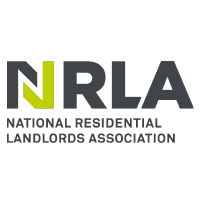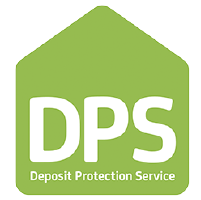
When you’re considering purchasing a property, one of the first and most critical questions you’ll likely ask is, “How much can I borrow for a home loan?” Understanding this figure is crucial as it sets the boundaries for your property search, helping you to identify homes within your budget and avoid disappointment later in the process. Whether you’re a first-time buyer or looking to move up the property ladder, knowing your borrowing power is essential. This guide will help you navigate the complexities of mortgage borrowing, with a particular focus on the UK housing market, and how Homesearch Properties can assist you in your journey.

Understanding Mortgage Affordability
The amount you can borrow for a home loan is primarily determined by your financial situation. Lenders will assess your income, outgoings, and credit history to calculate how much they are willing to lend. This process is known as a mortgage affordability assessment.
1. Income Assessment
Your income is one of the most significant factors in determining how much you can borrow. Generally, lenders will lend a multiple of your annual income. In the UK, this typically ranges from 4 to 4.5 times your annual salary. For example, if you earn £50,000 per year, you might be able to borrow between £200,000 and £225,000. However, some lenders may offer higher multiples, especially if you have a strong credit history and low levels of debt.
If you’re purchasing a home with a partner, lenders will consider your combined income, potentially allowing you to borrow more. Homesearch Properties can help you find properties that fit within this budget, ensuring you’re looking at homes that are realistically affordable for you.
2. Outgoings and Debt
Lenders will also look at your outgoings and any existing debt. This includes other loans, credit card balances, car finance, and even childcare costs. The more debt and regular outgoings you have, the less you may be able to borrow. It’s essential to provide an accurate picture of your financial situation when applying for a mortgage, as this will impact the lender’s decision.
Reducing your debt before applying for a mortgage can increase your borrowing power. Paying off credit cards and personal loans, and minimising regular outgoings, can make a significant difference in how much a lender is willing to offer.
3. Credit History
Your credit history plays a vital role in how much you can borrow. Lenders will conduct a credit check to assess how well you have managed debt in the past. A good credit score can not only increase the amount you can borrow but also secure you a lower interest rate. Conversely, a poor credit history can limit your borrowing options and lead to higher interest rates.
If your credit history is less than perfect, it’s worth taking steps to improve it before applying for a mortgage. This might include ensuring you are on the electoral roll, paying down outstanding debts, and making sure you pay all your bills on time. Homesearch can advise on the steps to take to improve your credit score, helping you get the best possible mortgage deal.
4. Deposit Amount
The size of your deposit also impacts how much you can borrow. In the UK, the minimum deposit typically required is 5% of the property’s value. However, the more you can put down as a deposit, the better. A larger deposit reduces the loan-to-value (LTV) ratio, which is the amount of the loan compared to the value of the property. A lower LTV ratio is less risky for lenders, meaning they may offer you a better interest rate and, potentially, allow you to borrow more.
For example, if you’re looking at a property worth £300,000, a 10% deposit would be £30,000. The mortgage would then be for the remaining £270,000. The lower the LTV, the more options you will have when it comes to choosing a lender and securing favourable terms.
The Role of Interest Rates
Interest rates are another critical factor in determining how much you can borrow. Even a small difference in interest rates can have a significant impact on your monthly repayments and, consequently, how much a lender will allow you to borrow.
There are two main types of interest rates to consider: fixed and variable. A fixed-rate mortgage means your interest rate (and thus your monthly repayments) will stay the same for a set period, typically between 2 and 5 years. This can provide peace of mind as your repayments won’t change, even if interest rates rise.
A variable-rate mortgage, on the other hand, means your interest rate can go up or down. While you might benefit from lower rates initially, there’s a risk that rates could rise, increasing your monthly repayments. Lenders will consider these factors when assessing how much they are willing to lend, often being more cautious with variable-rate mortgages.
Homesearch can help you understand the different types of mortgages available and how they might affect your borrowing power. By comparing the market, Homesearch Properties can assist you in finding the best mortgage deal for your circumstances.
Mortgage Types and How They Affect Borrowing
There are several different types of mortgages available in the UK, each with its own advantages and disadvantages. The type of mortgage you choose can impact how much you can borrow and how much you will repay over the life of the loan.
1. Repayment Mortgages
A repayment mortgage is the most common type of home loan. With this type of mortgage, you make monthly payments that cover both the interest and a portion of the capital (the amount you borrowed). By the end of the mortgage term, usually 25 to 30 years, the entire loan will be repaid.
This type of mortgage is generally considered low-risk by lenders because the debt is being paid off gradually over time. As a result, lenders may be more willing to offer higher loan amounts.
2. Interest-Only Mortgages
With an interest-only mortgage, your monthly payments only cover the interest on the loan, not the capital. This means that at the end of the mortgage term, you will still owe the original amount you borrowed. Interest-only mortgages can make monthly repayments lower, which might seem attractive, but they carry significant risks.
Lenders are often more cautious with interest-only mortgages, and they may require you to have a solid plan in place for repaying the capital at the end of the term, such as investments or the sale of the property. Due to the higher risk, you may find that you can borrow less with an interest-only mortgage compared to a repayment mortgage.
3. Fixed-Rate Mortgages
As mentioned earlier, fixed-rate mortgages have an interest rate that stays the same for a set period. This predictability makes budgeting easier, as your monthly repayments won’t change, even if interest rates rise. Fixed-rate mortgages are popular among first-time buyers for this reason.
However, once the fixed-rate period ends, the mortgage will usually revert to the lender’s standard variable rate (SVR), which could be higher. It’s important to plan for this change when considering how much you can borrow.
4. Tracker Mortgages
Tracker mortgages are a type of variable-rate mortgage where the interest rate follows (or “tracks”) the Bank of England base rate plus a set percentage. If the base rate goes up, so do your monthly repayments, and if it goes down, your payments will decrease.
While tracker mortgages can offer lower rates initially, they come with the risk of rising payments if interest rates increase. Lenders may take this risk into account when deciding how much you can borrow.
Affordability Calculators and Mortgage in Principle
Before you start searching for homes, it’s a good idea to use an affordability calculator. These tools can give you a rough idea of how much you might be able to borrow based on your income, outgoings, and other factors. Many lenders and comparison sites offer free calculators that can help you get started.
In addition to using an affordability calculator, it’s also worth getting a Mortgage in Principle (MIP). An MIP is an indication from a lender of how much they might be willing to lend you, based on an initial assessment of your financial situation. While it’s not a guaranteed offer, having an MIP can make you a more attractive buyer to sellers, as it shows you are serious and have taken steps to secure financing.
Homesearch Properties can guide you through this process, helping you understand your borrowing power and ensuring you have the right tools to make informed decisions. With an MIP in hand, you can begin searching for homes with confidence, knowing what your budget allows.
Hidden Costs and How They Affect Borrowing
When calculating how much you can borrow, it’s essential to consider the hidden costs of buying a home. These costs can add up quickly and impact how much you have available for your mortgage deposit and monthly repayments.
1. Stamp Duty
Stamp Duty Land Tax (SDLT) is a significant expense when buying a property in the UK. The amount you pay depends on the value of the property and whether you’re a first-time buyer. Stamp duty can take a large chunk out of your budget, so it’s important to factor this into your calculations.
2. Legal Fees
You’ll need to hire a solicitor or conveyancer to handle the legal aspects of buying a property. Legal fees can vary, but they typically range from £500 to £1,500. These costs need to be factored into your overall budget.
3. Survey Costs
Before you buy a property, it’s wise to have a survey carried out to check for any structural issues. There are different types of surveys, ranging from basic valuations to full structural surveys, with costs ranging from a few hundred to over a thousand pounds.
4. Moving Costs
Don’t forget to budget for the cost of moving. This includes hiring a removal company, which can cost several hundred pounds, depending on the distance and the amount of belongings you have.
5. Home Insurance
Lenders will require you to have buildings insurance in place before they release the funds for your mortgage. Home insurance is another ongoing cost that needs to be included in your budget.
Homesearch can help you identify and plan for these hidden costs, ensuring that you have a realistic budget and don’t overstretch yourself financially.
How Homesearch Properties Can Help
When it comes to finding the right property, Homesearch Properties is your ideal partner. With extensive knowledge of the Homesearch London property market, Homesearch Properties can help you find homes that match your budget and borrowing capacity. By working closely with you, Homesearch Properties ensures that your property search is focused and effective, saving you time and helping you avoid homes that are out of your financial reach.
Moreover, HSP can connect you with trusted mortgage advisors who can guide you through the borrowing process, ensuring you secure the best possible mortgage deal. Whether you’re a first-time buyer or looking to upgrade to a larger home, Homesearch Properties is committed to making your home-buying journey as smooth and stress-free as possible.
Conclusion
Understanding how much you can borrow for a home loan is a critical step in your property search. By considering your income, outgoings, credit history, and deposit, and understanding the impact of interest rates and mortgage types, you can make informed decisions about your borrowing capacity.
With the right support from Homesearch Properties, you can navigate the complexities of the mortgage market, find homes within your budget, and move one step closer to securing your dream home. Whether you’re searching for homes in London or beyond, Homesearch is here to help you every step of the way.



